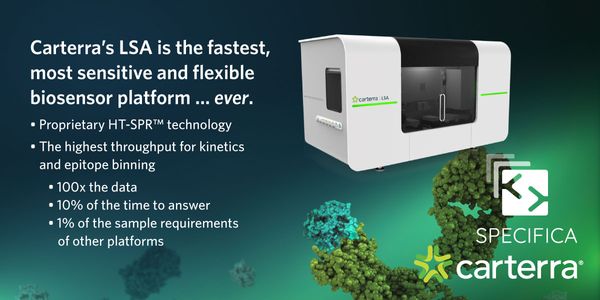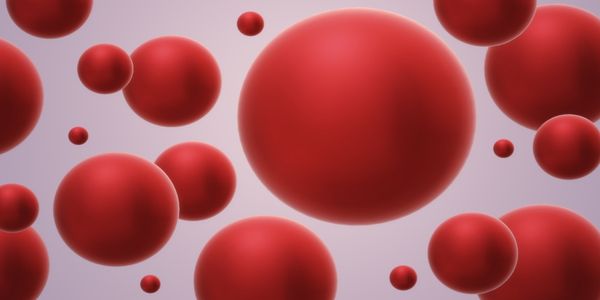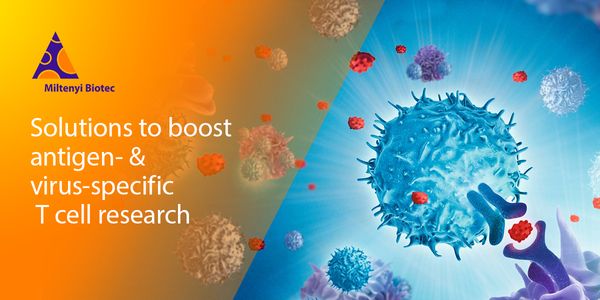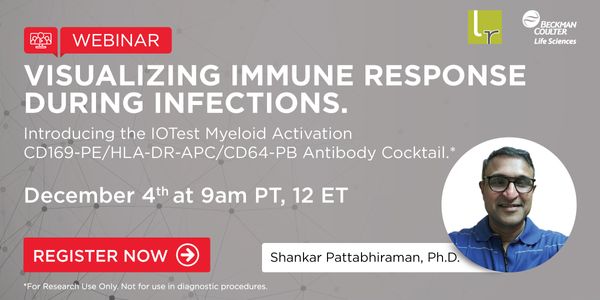APR 06, 2021 | 10:00 AM
DATE: April 6, 2021 TIME: 10:00am PDT Accurate and efficient data analysis of protein targets is an integral part of the gel and western blot imaging workflow. The Invitrogen iBright Analysi...
APR 01, 2021 | 8:00 AM
Date: April 01, 2021 Time: 8:00am (PST), 11:00am (EST) Generating therapeutic antibodies is far more challenging than obtaining antibodies that merely recognize their targets. Engineering po...
MAR 30, 2021 | 8:00 AM
DATE: March 30, 2021 TIME: 08:00am PST In this talk, we will discuss the value of moving towards modular and automated, closed-system technologies designed to enable scalable and cost-effect...
MAR 25, 2021 | 8:00 AM
Date: March 25, 2021 Time: 8:00am (PST), 11:00am (EST) Flow cytometry has expanded to have more users, more data, and multiple instrument types. While this has lead to more quantitative data...
MAR 22, 2021 | 8:00 AM
Date: March 22, 2021 Time: 8:00am PDT, 11:00am EDT Viral diversity presents an ongoing challenge for diagnostic tests, which must be designed to accurately detect all current and future circ...
MAR 16, 2021 | 8:00 AM
DATE: March 09, 2021 TIME: 08:00am PST The COVID-19 pandemic has placed urgency on precise analysis of rare antigen- and virus-specific T cells. At Miltenyi Biotec, we offer a complete workf...
FEB 24, 2021 | 10:00 AM
DATE: February 24, 2021 TIME: 10am PST Automated lab instruments such as liquid handlers and cell sorters are increasingly common in all types of laboratories, driving fast results for labor...
Platform based therapeutics and vaccines offer a unique opportunity to simplify and streamline the drug development process. Moderna has taken the approach of harnessing the power of mRNA as...
FEB 11, 2021 | 8:00 AM
Date: February 11, 2021 Time: 8:00am (PST), 11:00am (EST) Getting answers on what’s in your precious AAV, LVV, or lipid nanoparticle (LNP) sample means wanting to use the lowest possib...
FEB 10, 2021 | 7:00 AM
Date: February 10, 2021 Time: 7:00am (PST), 10:00 am (EST) In this talk today we will discuss a new approach to profile influenza proteins. Influenza vaccines typically consist of either a...
JAN 21, 2021 | 10:00 AM
Date: January 21, 2021 Time: 10:00am (PST) Abstract Learning Objectives Discuss Procalcitonin as a biomarker to help distinguish viral versus bacterial infection Review the literature suppor...
JAN 21, 2021 | 8:00 AM
Date: January 21, 2021 Time: 8:00am (PST), 11:00am (EST) Today, critical reagent characterization is a key component in the overall workflow to establish robust ligand binding assays (e.g.,...
JAN 14, 2021 | 7:00 AM
DATE: January 14, 2021 TIME: 7:00am PST Transferring a biologic candidate from the research and development phase to commercial production usually requires increasing the working volume...
DEC 18, 2020 | 5:00 AM
Date: December 18, 2020 Time: 2:00pm PST Europe continues to battle a second wave of COVID19 epidemic; more than 30.000 newly infected patients are being confirmed daily in Italy. As of Nove...
DEC 17, 2020 | 9:00 AM
Date: December 17, 2020 Time: 9:00am (PST), 12:00pm (EST) Correlative light and electron microscopy (CLEM) advances biological discoveries by merging different microscopes and imaging moda...
DEC 15, 2020 | 10:00 AM
DATE: December 15, 2020 TIME: 10:00am PST Scientists from Thermo Fisher Scientific will walk us through the world of microorganisms. They will discuss their most recent research on viruses,...
DEC 04, 2020 | 9:00 AM
Date: December 4, 2020 Time: 9:00am PST, 12:00pm EST Activation of Myeloid cells and interferon release is an early response to infection. The 3-marker combination (CD169/CD64/HLA-DR) gives...
This drug development program is designed to create a family of broad-spectrum, pan-coronaviral drugs that respectively inhibit multiple key enzymes required for viral replication. By target...
























